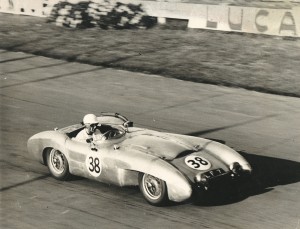 Every week Rupert Toovey, senior director of Toovey’s, writes an article for the West Sussex Gazette newspaper. If you would like to read an archive of Rupert’s articles you can do so on the Toovey’s blog by clicking here. You can also always read Rupert’s articles first in the West Sussex Gazette. His article this week was ‘John Young: Gentleman Racer, Collector & Enthusiast.’ Click here to read the article.
Every week Rupert Toovey, senior director of Toovey’s, writes an article for the West Sussex Gazette newspaper. If you would like to read an archive of Rupert’s articles you can do so on the Toovey’s blog by clicking here. You can also always read Rupert’s articles first in the West Sussex Gazette. His article this week was ‘John Young: Gentleman Racer, Collector & Enthusiast.’ Click here to read the article.
Month: July 2013
John Young: Gentleman Racer, Collector & Enthusiast
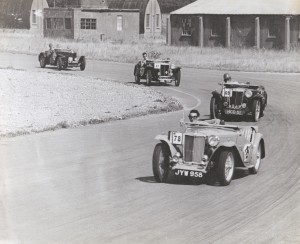
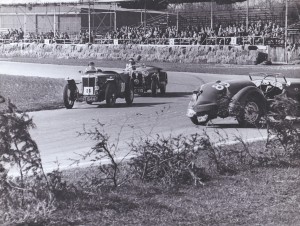
The Sussex Downs have only just finished reverberating to the exuberant sound of racing cars and motorcycles at Goodwood Festival of Speed. Racing cars delight the senses with a cacophony of sound, the smell of racing oil and tyres and the spectacle of speed and colour. This week I am with my great friend John Young, a man whose life has been closely bound up with the fortunes of motor racing and automobiles. A works driver for the Connaught team in the 1950s, with drives at many of the great motor racing circuits and races, John Young is part of that glamorous and courageous cohort of racing drivers in the years after the Second World War.
When he left Dulwich College, John joined the R.A.F. “I wanted to fly a Spitfire,” he says, “but there were too many pilots just after the war for me to get a look in, so I left and joined the family firm, Rose and Young. We were agents for Mercedes-Benz.” He continues, “My father always wanted to race but my mother would never have let him. I was mad keen on cars when I was young and so he encouraged me.” John has always had a passion for glamour and speed and he is still mad keen about cars, having collected and owned some of the world’s most iconic automobiles. John’s enthusiasm has not diminished over the years. “I’ve still got my 1955 Mercedes-Benz Gullwing,” he says excitedly. The silver Gullwing is particularly special, the world’s first true supercar and in beautiful, original condition.
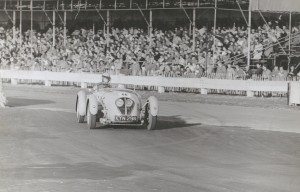
His first experience of speed came when he was taken to an airfield where Roy Salvadori was testing a Frazer Nash Le Mans Replica. John explains, “Roy came tearing to a halt beside where we were standing, asking for a passenger to balance the car and I volunteered!” This marked the beginning of a lifelong friendship. Roy Salvadori was an exceptional driver, winning at Le Mans in 1959 for Aston Martin and driving in more than fifty Formula One races. I ask John if he ever raced at Le Mans; he replies, “My mate Maurice Charles asked me to drive with him in his Jaguar D-type at Le Mans but he turned it over before I’d had a turn.”
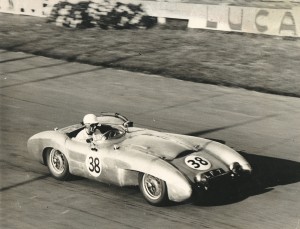
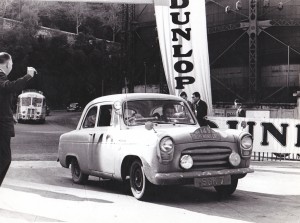
John Young raced at Goodwood, Silverstone and many of the famous circuits of his era. “We raced everything in those days,” he remarks. “I entered the Monte Carlo Rally with John Coombs and Roy Salvadori in a Ford Anglia and did the rally again with Graham Hill in a Riley 1.5. Even in my day, motor racing was becoming much more commercialized, but I started in an MG TC that my father bought me, which I raced at Goodwood. I then drove a Frazer Nash Le Mans Replica, which Coombs prepared for me.” Always the gentleman racer, in 1955 John was taken on as the works driver to the Connaught team. In 1956 he raced for them at Aintree alongside Mike Hawthorn, Roy Salvadori, Jack Brabham and Stirling Moss, who won the B.A.R.C. Grand Prix event in a privately entered 250F Maserati. “I owned a 250F Maserati Grand Prix car,” John says nonchalantly, a grin crossing his face. “I used it in the Brighton Speed Trials in the 1960s before I sold it to Fangio for his South American museum. Fangio was an extraordinary driver.”
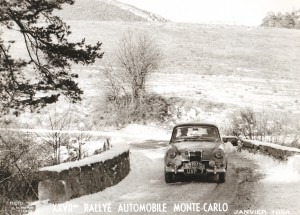
In 1955 John raced in the Goodwood Nine Hours Endurance Race in a Lotus-Connaught, seen here. His co-driver was John Coombs, who, like John Young, also had a successful garage business and was instrumental in developing and persuading Jaguar to build a lightweight E-type to compete with the 250GTO Ferrari. “We were going well in the Connaught and racing into the evening,” John explains, “until Coombs came in saying his hands were cold and borrowed my gloves. Shortly after that he turned it over but, thank God, he was alright!”
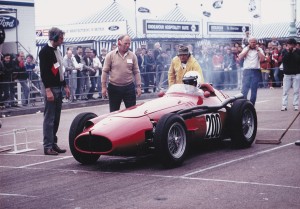
John Young was offered a drive in a Connaught at the 1955 Dundrod TT in Ireland with a talented young driver Bill Smith. John recounts the story of the race. “We tossed-up to decide who would drive first. He won the toss but was killed at Deer’s Leap during that first stint.” John is still clearly affected by the memory of this loss. Two other drivers lost their lives at Dundrod in 1955. With such high safety standards in modern motor racing, it is hard to reflect on how dangerous the sport was in those post-war years. Philosophically John remarks, “You have no fear when you’re young and we had a good time in those days. It was exciting – the racing, the camaraderie, the travelling and the pretty girls!”
I ask John if he has raced since and he answers, “I gave up motor racing in the 1950s and took up boats – did a few things like the Fastnet Race – but I have done some classic car events like the 1988 Mille Miglia Revival in an Alfa Romeo 2.6, which I drove with John Coombs.”
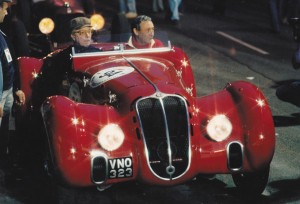
As I leave, I ask him why he doesn’t live in Monaco with his peers and he gestures towards the South Downs and replies, “Oh, I’ve had yachts down there but I love England. Look at that view – why would you want to be anywhere else!” His delight in sharing a story and his enthusiasm are balanced by his self-effacing modesty. A generous man, John Young epitomises the best of his era: a gentleman racer, a collector and an enthusiast with a deep love of life, cars and the Sussex countryside.
By Revd. Rupert Toovey. Originally published on 17th July 2013 in the West Sussex Gazette.
The Art of the Garden at Parham House
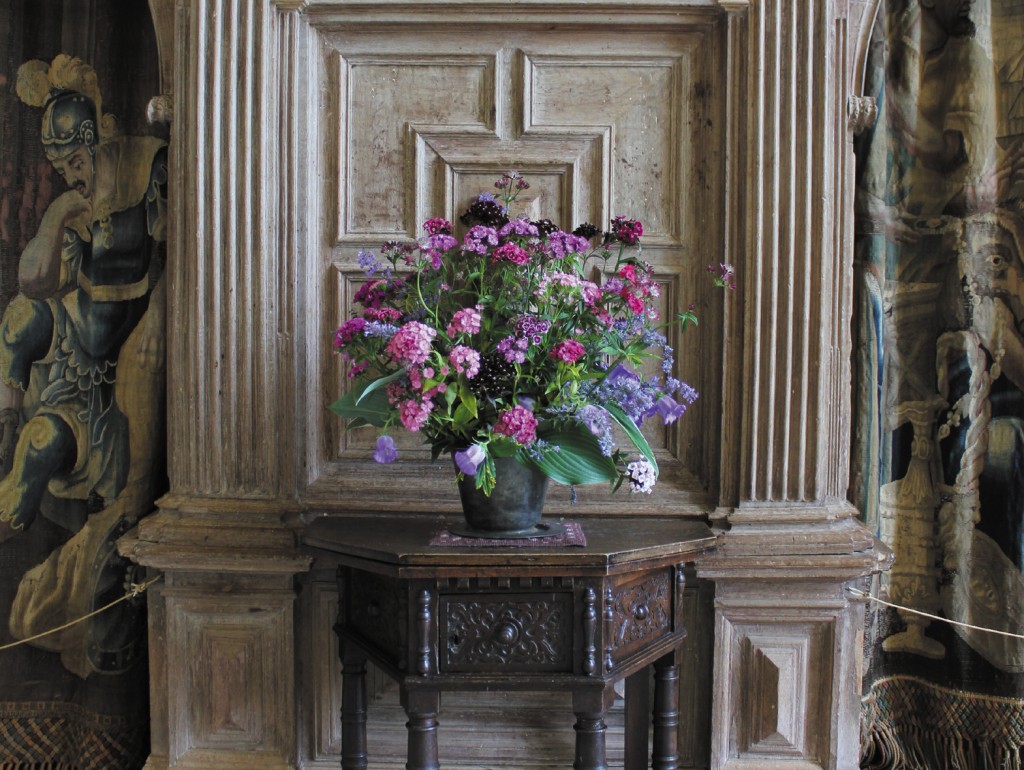
The park and gardens at Parham reflect a timeless English love of landscape and horticulture. They contain many rare specimens, ranging from lichens to ancient oaks, which work in concert with the surrounding downland landscape. In the walled garden, the swathes of summer flowers, box-hedged ornamental vegetables and espalier fruit trees are complemented by an array of medieval and Tudor culinary and medicinal herbs.
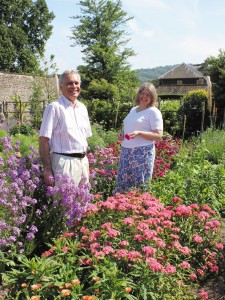
Regular readers of this column will know that Clive and Alicia Pearson bought Parham in 1922 and set about restoring the house and gardens after years of neglect. Mrs Pearson loved to fill the house with fresh-cut summer flowers, arranged in what she called the “Parham way”. Lady Emma Barnard, the current custodian of Parham House and gardens, acknowledges her great-grandmother’s influence on the walled garden today. “Alicia’s love of blocks of colour and fluid forms is reflected in the naturalistic effect of the planting in the garden,” she says. “My great-grandmother wrote instructions on the flower arrangements for the house, especially in relation to colours, so that they would complement the collections of the rooms in which they were placed. We still follow her notes today!”
Mrs Pearson’s tastes reflected those of her generation. She embraced the modern whilst keeping a firm eye on the past. The famous florist and designer Constance Spry also drew from nature. She inspired a generation with her naturalistic taste before and after the Second World War – perhaps she was inspired by the special “Parham way”. As you journey around Lady Emma’s delightful home, you notice that each room has a flower arrangement which draws your eye to the treasures before you and the play of light upon them. My eye is caught by the cascading array of summer flowers shown here against the cool hue of the limed oak panelling in the Great Hall. The flowers bring the colours of the flanking tapestries to life in an unexpected, beautiful way.
Parham’s gardens are particularly fine this year. The swathes of summer flowers seem to dance in the gentle breeze. They frame the paths as you approach the orchard and the vegetable and herb beds with their clipped box hedge borders.
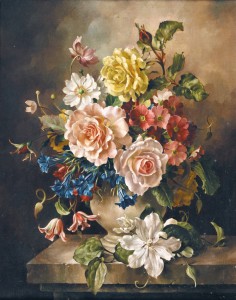
Lady Emma and her husband, James, are keen to show me the cutting beds where all the flowers for the house are grown. In amongst the brightly coloured blocks of flowers Emma declares, “We are always keen to take the naturalistic into the house – cow-parsley and even bolted rocket can be very good in arrangements.”
The work of British artist Harold Clayton (1896-1979) was shaped by his love of the garden and his attention to detail. Like the taste expressed in the special “Parham way”, Clayton took the Dutch still life of the 17th century and made it modern. This taste is much sought after today. I discovered the oil painting by him shown here some years ago. Today it would realise £6000-8000 at auction, testament to the enduring popularity of the English country house and garden aesthetic expressed so beautifully and timelessly at Parham.
Parham’s 20th Annual Garden Weekend is this coming weekend, Saturday 13th and Sunday 14th July 2013, between 10.30am and 5.00pm each day. It is a must for all of us who love gardens but don’t forget to check out the beautiful flower arrangements in the house! For more information go to www.parhaminsussex.co.uk or telephone 01903 742021.
By Revd. Rupert Toovey. Originally published on 10th July 2013 in the West Sussex Gazette.
A Life with Traction Engines
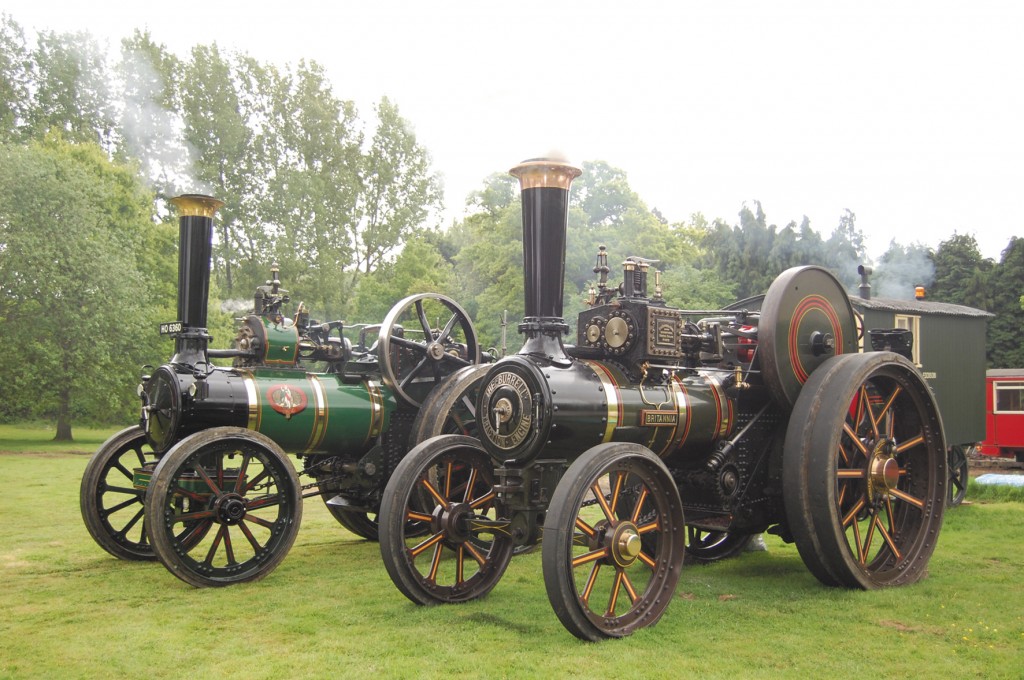
As soon as you start to talk about traction engines, Neil Gough’s eyes light up and his face breaks into a smile. His quiet enthusiasm is contagious. Neil discovered his passion for traction engines as a ten-year-old boy at the Parham Steam Rally, held at the foot of the Sussex Downs. I remember going and in those days there were rows of engines parading on the fields. It was at this event that a family friend, Peter Fagg, invited him onto his engine and the rest, as they say, is history. Today, Neil is a highly respected engineer specialising in traction engine mechanics. His gifts are in demand among the select band of custodians who keep these extraordinary engines running across the British Isles and even as far afield as New Zealand.
From about ten years old, whenever he could, he travelled with Peter to steam rallies across the country, living in the van and helping to polish and maintain the engine. Neil bought his first engine in 1997 when he was 19 years old. “It was a Marshall, made in about 1925,” says Neil. “They were made in Gainsborough, Lincolnshire. I paid £6,000 but it was in bits. After three years I had her running and it took another three years to paint her by hand.” Neil enjoyed the Marshall for many years and eventually sold her for £70,000, a testament to the quality of his work and the demand for these steam leviathans.
His latest engine and project is a McLaren road locomotive, circa 1912. The engineering works were located in Hunslet, Leeds, and run by the McLaren brothers, John and Henry. “This is the biggest road locomotive ever built,” Neil enthuses. “She’s top-notch but in poor condition. She’s had a chequered history and might have been a war department cancelled order – I’m still researching the engine’s history. She was exported to Australia and eventually blown up by scrap men. I’m planning to bring her back to her original state.” The engine was saved for preservation in 1978 and brought back to this country by Neil’s friend, Brian Hardy.
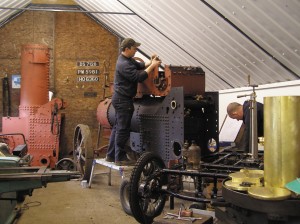
As we walk through the works, there are a number of clients’ engines being repaired. I am excited to discover the exacting tolerances Neil works to on engines of such enormous scale. “We work to a thousandth of an inch,” he says with quiet pride. The array of lathes and tools speak loudly of the calibre of this talented, modest engineer-enthusiast. To find gear-cutting, valve-facing, horizontal and vertical boring and so many other engineering skills under one roof is rare today. Everything is unique and handmade.
I ask Neil what is the thing he most likes about these traction engines and without hesitation he replies, “Driving them! It’s difficult and a skill. The challenge is that each engine has its own personality and quirks.”
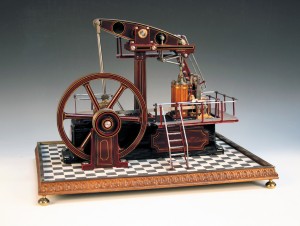
If a traction engine is beyond your reach, perhaps you could consider a model steam pump engine, like the one illustrated. It will be offered for sale in Toovey’s specialist auction of collectors’ toys and models, together with a number of other model steam stationary engines, on Tuesday 9th July 2013. It was hand built by the late Ron Wheele, who carried out restoration work at Brighton Toy Museum and the Brighton Engineerium. This beautifully crafted model is estimated at £800-1,200.
Neil Gough is always delighted to share his passion for engines and engineering with enthusiasts. To find out more about Neil’s engineering services, contact him on 01903 891454 or go to his website www.steamrestorations.co.uk.
“The major steam rally for traction engines in Sussex is now held at Wiston,” says Neil. With more than thirty steam engines, vintage and classic vehicles and many exhibitors, this year’s Wiston Steam Rally will be held this coming weekend, on Saturday 6th and Sunday 7th July. Who knows, you may discover that you share a passion for steam with Neil Gough! For more information go to www.sussexsteamrally.co.uk.
By Revd. Rupert Toovey. Originally published on 3rd July 2013 in the West Sussex Gazette.
Bing and Nuremberg Tinplate Toys
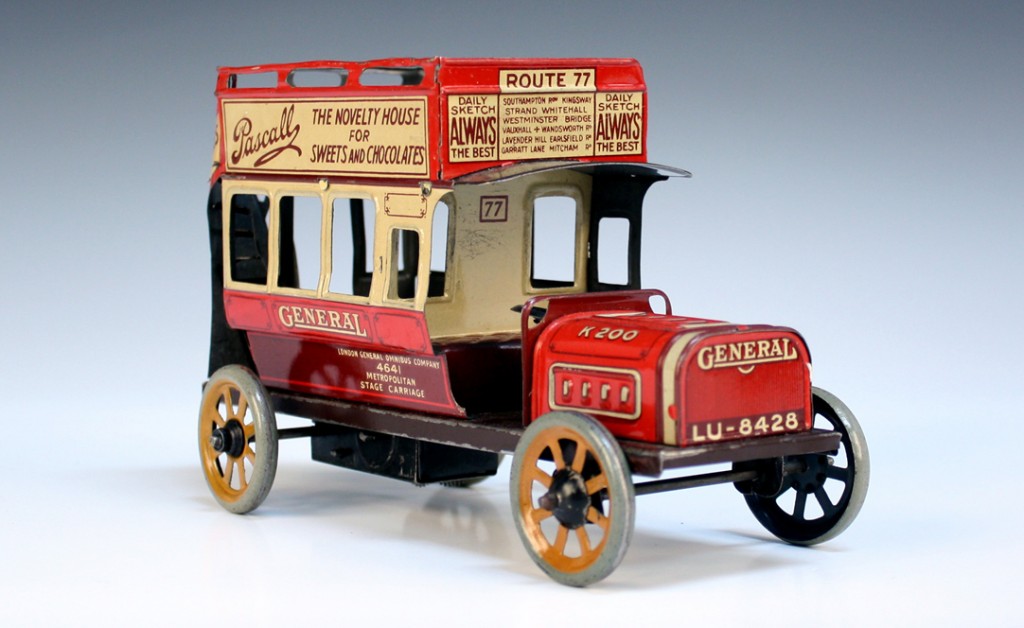
The tinplate toy’s development in the mid-19th century with it’s bold and bright colouring, tactile modelling and often superb detailing quickly replaced its wooden toy predecessors for obvious reasons. The rise in the tinplate toy was spearheaded by German manufacturers, such as Märklin, who set the high standards for the industry. Today, the city of Nuremberg is known around the world as a center for toy production and hosts the largest international toy fair. The renown of the city started with a firm called Bing.
The brothers Ignaz and Adolf Bing originally opened a distribution firm for household goods in 1866, quickly adding toys to their list of products and a manufacturing firm to their flourishing business. By 1871 the company was employing over 100 workers. The company continued to grow and at the 1882 State Exposition Bing had the largest range of wares of any exhibiting manufacturer and were already shipping to destinations around the globe. Expansion at the firm continued and when the company issued its 550 page catalogue and price list in 1912 it was the largest toy manufacturer in the world employing 2700 people. It was not until the First World War that the firm started to dwindle in popularity, the output was changed to manufacturing military goods and the company was so large it was now necessary to change to a stock company eventually splitting into several manufacturing facilities. Although splinters of the company remain today the heyday for the firm was certainly around the turn of the last century.
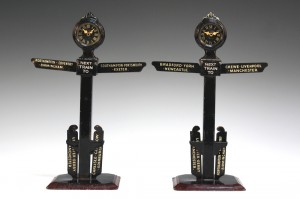
Toovey’s specialist auctions of Toys, Dolls and Games regularly include examples from this and other German toy manufacturers and the July auction is no different. Lot 3160 is a beautifully crafted early 20th century Bing tinplate clockwork open top double deck bus with external staircase. The 18cm long bus is beautifully lithographed with the London General Omnibus Company logo and advertisements for Pascall confectionery, Wright’s Coal Tar Soap and Dunlop. For collectors, condition is all important and the generally good condition of this bus is reflected in its £200-400 pre-sale estimate. Bing are probably best known for the creation of model railways and also included in Toovey’s toy auction is a pair of Bing tinplate ‘next train to’ station indicators. Each platform sign has a clock face and six changeable destination boards. The pair are a similar date to the double deck bus and are estimated at £80-120 due to a little playwear and minor rust spots.
Bing alone did not make Nuremberg the center for toy products. At one time it is believed there were more than fifty toy firms operating in the city, most of whose names have been lost or forgotten in the archives. That said, many Nuremberg-based names are still revered by collectors including Arnold Fleischmann and Lehmann, while children of today will know the modern day producers of Playmobil, Carrera and Trix, continuing the legacy of toy production in Nuremberg.
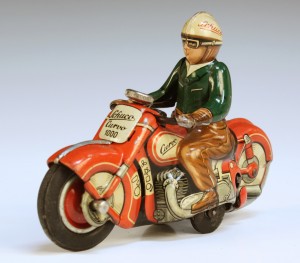
Another name joining the Nuremberg toy producer’s hall of fame was a firm established in the pre-war years of the 20th century by Heinrich Müller and Heinrich Shreyer. Also creating tinplate toys, Schreyer & Co enjoyed great success until the First World War, but with reinvestment the company survived, rebranding to Schuco in 1921. Under this trade name the company would eventually gain international fame, despite the difficulty of the second world war. In 1962, an estimated one hundred million Schuco toys were sold. Because of their vast and varied output Schuco tinplate toys regularly appear in the toy sales at Toovey’s. The auction on Tuesday 9th July features a tinplate Schuco ‘Curvo 1000’ measuring 12.5cm in length. The mid-20th century racer on a motorcycle, Lot 3165, is offered with the remnants of its original box and the original instructions. It carries a pre-sale estimate of £100-150 which illustrates that collecting tinplate toys can still be relatively affordable when buying at auction, that is unless you amass a collection to rival that of the late publishing tycoon Malcolm Forbes who was a well-known and avid collector. Tinplate toys were made throughout the 20th century with America and Japan becoming major producers too, flying the tinplate flag for Britain was Chad Valley among others. Many of the firms are still producing tinplate toys to be enjoyed by collectors now and in the future, but there is something inexplicably lovely about the vintage versions, like those waiting to be discovered at Toovey’s.